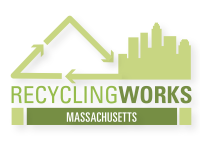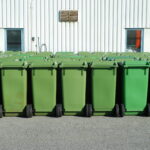Most businesses and institutions generate plastic materials that can be recycled. Many of these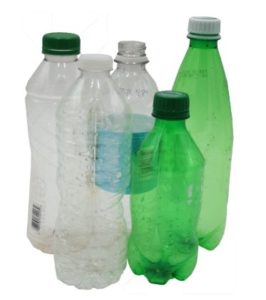 plastics, such as bottles, jars, jugs, and tubs, can be collected together through a single stream or dual stream recycling program. Plastics that are not easily sorted at a materials collection facility (MRF) are considered contamination when placed in a mixed single or dual-stream recycling bin. Some plastics, such as plastic bags and other film plastics, or rigid plastics, must be collected separately to be processed by a dedicated plastics recycler.
plastics, such as bottles, jars, jugs, and tubs, can be collected together through a single stream or dual stream recycling program. Plastics that are not easily sorted at a materials collection facility (MRF) are considered contamination when placed in a mixed single or dual-stream recycling bin. Some plastics, such as plastic bags and other film plastics, or rigid plastics, must be collected separately to be processed by a dedicated plastics recycler.
What plastics should go in single stream recycling?
Some plastics are coded with numbers ranging from 1 to 7, 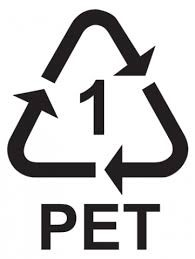 which identify the basic resin type of the plastic. However, just because an item displays a resin identification code does not necessarily mean that the product is recyclable at your local materials recycling facility (MRF). There are additional considerations when determining if a plastic is recyclable, such as the size, shape, and color of the material.
which identify the basic resin type of the plastic. However, just because an item displays a resin identification code does not necessarily mean that the product is recyclable at your local materials recycling facility (MRF). There are additional considerations when determining if a plastic is recyclable, such as the size, shape, and color of the material.
Most clean plastic bottles, jugs, and tubs can be recycled. Keep plastic lids attached. Lids that are not attached are too small for sorting equipment and literally fall through the cracks. All plastics collected for recycling must be free from contaminants such as food, liquid, or other non-recyclable materials. Refer to the Massachusetts Department of Environmental Protection (MassDEP) Recycle Smart MA search tool to determine whether a specific material can be accepted and processed by most single stream MRFs in Massachusetts, and consult your hauler if you have additional questions about specific items commonly generated at your business.
See the RecyclingWorks Single Stream Recycling webpage for additional guidance on starting and maintaining an effective single stream recycling program.
RecyclingWorks developed a visual to help guide businesses and institutions on how to collect recyclable materials in plastic bags without contaminating single stream recycling.
What plastics should not go in single stream recycling?
Do not place any of the following materials in single stream recycling.
- Plastic bags and other film plastics (e.g. plastic bags, cling wrap, rubber gloves, agricultural film, boat shrink wrap) – Plastic film and bags tangle with the rotating sorting equipment at single stream MRFs so avoid placing these materials in mixed recycling. However, many plastic film materials can be collected separately for recycling.
- Bulky rigid plastics (e.g. plastic buckets, crates) – Large plastic items are too big for MRFs to handle, but these materials can often be collected separately for recycling.
- Polystyrene or polyethylene foam (e.g. Styrofoam) – These materials are often used as packing and shipping materials, or as disposable food and beverage containers. Although these items will often have a recycling triangle on them, they should never be placed in the recycling bin. In some cases, polystyrene foam can be consolidated and sent directly to a plastics recycler.
- Black plastic (e.g. takeout containers) – In the majority of Massachusetts’ MRFs,
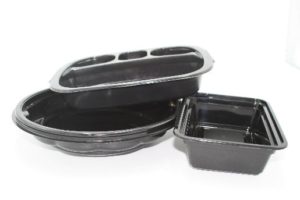 the scanners used to sort materials are unable to recognize black plastic materials, which leads them to be routed for disposal.
the scanners used to sort materials are unable to recognize black plastic materials, which leads them to be routed for disposal. - Items smaller than a smart phone (e.g. plastic straws, miniature bottles, utensils and lids) – These are incompatible with MRF equipment, since small or thin items end up falling through the cracks.
Businesses and institutions can collect some of these items separately for recycling, and should consider reducing or discontinuing use of other materials, such as plastic straws.
Recycling plastic film
Plastic bags and films, like shrink wrap, are usually categorized as plastic code #4, or LDPE (Low-density polyethylene). This kind of plastic is used to manufacture grocery bags and some flexible lids and bottles. Though plastic bags and films should not be included in single stream recycling, this material does have a market, and can be recycled.
Certain types of plastic film are generated in large quantities by specific industries. For example, RecyclingWorks often receives inquiries about agricultural film and boat shrink wrap. Some plastics recyclers will accept these materials if they are clean, dry, and collected separately. The color of the wrap or film often impacts recyclability as well. When removing the plastic cover from marine or agricultural applications, recyclers typically ask that the woven banding material and all other items, such as grommets and zippers, are removed. For boat wrap, it is important that all string, straps, and fasteners (or any non-shrink wrap material) be removed. These items are considered contaminants because they can disrupt the uniformity of the melted plastic. For recycling, these plastics need to be clean of debris, bundled tightly, and tied using an excess strip of the material.
The Woods Hole Sea Grant Program has developed a video explaining how to prepare wrap for recycling. Clean Ocean Access has a boat shrink wrap recycling program that enables businesses such as marinas, boat yards, and yacht clubs to become boat wrap collection sites. Businesses without collection programs can refer interested customers to the Recycle Smart MA website to learn more about other boat wrap recycling programs in Massachusetts.
To further reduce waste related to boat shrink wrap, consider one of the following options:
- Reuse existing wrap for future boat winterization needs.
- Use a durable canvas cover instead of shrink wrap.
- Store boats indoors when possible, to eliminate the need for wrap altogether.
Businesses that regularly generate a large quantity of recyclable plastic film may want to collect and bale this material on-site to maximize the cost-effectiveness of their recycling program. The RecyclingWorks Find-a-Recycler tool allows you to search our database and connect with a processor that accepts plastic film for recycling.
Many retailers collect post-consumer plastic bags in bins located at the front of their stores, and combine these with commercial plastic film collected in the back-of-house. For a directory of plastic film drop off locations, as well as more information about recycling this material, visit PlasticFilmRecycling.org.
Recycling rigid plastics
Rigid plastics such as icing buckets, milk crates, seafood trays, and pharmaceutical containers are not accepted in single stream recycling. However, there are options and markets to recycle these materials. The RecyclingWorks Find-a-Recycler tool allows you to search our database and connect with a processor that accepts rigid plastics.
Rigid plastics are a common material found in supermarkets. The Association of Postconsumer Plastics Recyclers (APR) has several resources available to supermarkets who are interested in collecting rigid plastics, including details about the different sources and how to streamline collection. These programs may be a good option for generating additional recycling revenue. For more information, videos, pictures, and details about launching a successful program, visit Recycle Grocery Rigid Plastics.
Recycling polystyrene or polyethylene foam
Polystyrene or polyethylene foam includes items commonly referred to as Styrofoam, such as packing peanuts, coolers, egg cartons, or meat trays. Although these items are labeled as #4 LDPE and #6 PS, they are also approximately 95% air, so it is not cost-effective for most MRFs to store or ship for recycling. Some items, such as coffee cups and take out containers, are also often contaminated with food or liquids. Polystyrene or polyethylene foam should never be placed in single stream recycling containers.
Businesses that generate smaller quantities of packing peanuts, loose fill, and other shipping foam are encouraged to reuse the materials for outgoing packages. In addition, your local post office or delivery services may offer a take-back program for recycling the foam packaging included in mail or shipping containers.
EPS-Industry Alliance created an informational sheet for mail back programs available across the country and also a drop-off map with collection centers for expanded polystyrene packing foam. Always make sure to call the listed sites in advance to confirm your material is accepted, and in what form. All foam packing containers should be empty, clean, and without labels or plastic film. Due to contamination concerns, food or medical foam containers may not be accepted.
Businesses that regularly generate a large quantity of polystyrene or polyethylene foam may want to collect this material separately for recycling with a dedicated foam recycler. Requirements for storage and equipment will vary, but the foam should remain clean, dry, and without contamination. Depending on the specifications of the end-site, foam products can be stacked, bagged, bailed, or condensed using a foam densifier. For more information about the recycling process, see the Foodservice Packaging Institute’s Foam Recycling website. The RecyclingWorks Find-a-Recycler tool allows you to search our database and connect with a processor that may accept this foam for recycling.
Why should you recycle plastics?
Currently, all single-resin narrow-necked plastic containers are banned from disposal in the state by the Massachusetts Waste Bans. Recycling is also good for the planet and your local community because it helps conserve valuable resources, reduces pollution from production of new materials, helps to conserve limited disposal capacity, and creates new business development and jobs.
How are plastics recycled?
Conventional recycling programs that accept plastic containers sort these containers by resin type, and send them off for further processing. Once collected and sorted by resin type, plastics are typically either ground up or flaked, cleaned, and resold to a plastics manufacturer to be made into new plastic products.
Used plastic can be made into a second generation of products, including clothing and bags, durable building and construction products, door and window frames, exterior moldings, low-maintenance fencing and decks, and furniture such as Adirondack chairs.
Learn about recycling other materials
For more information on other commonly recycled materials, visit these pages:
- Bottles & Cans
- Cardboard
- Construction Materials
- Electronics
- Fluorescent Lamps/Light Bulbs
- Food Waste
- Mattresses
- Pallets
- Paper
- Single Stream
- Textiles
Additional Resources:
- Find out how to start or improve your own recycling program.
- Learn more about single stream recycling in Massachusetts.
- Refer to the Recycle Smart Recyclopedia search tool to check whether you are collecting the right plastic materials for recycling.
- Search our Recycler Database to find a hauler or processor for recyclable materials in your area.
- Learn more about Massachusetts Waste Bans.
